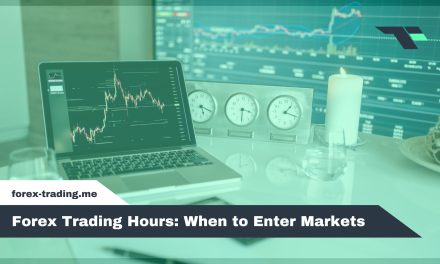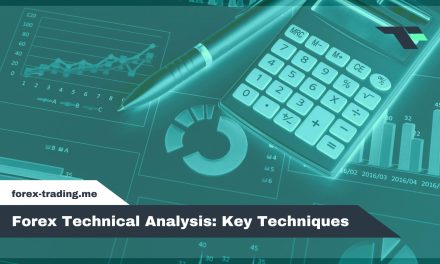
Forex Trading Hours: When to Enter Markets

Forex trading hours span three primary sessions: Asian (00:00-09:00 UTC), European (07:00-16:00 UTC), and American (12:00-21:00 UTC). The London-New York overlap from 13:00-17:00 UTC offers ideal trading conditions with 58% of daily volume and tight spreads. European sessions provide highest volatility, while Asian sessions favor range-bound strategies. Major economic announcements can generate 120-150 pip movements during American sessions. Understanding these patterns, along with daylight saving adjustments and holiday impacts, helps traders enhance entry timing and maximize profitability potential.
Table of Contents
Main Forex Trading Hours
The Asian session, spanning 00:00–09:00 UTC with Tokyo as its primary hub, typically exhibits lower volatility patterns as it processes overnight developments and sets initial price directions for major currency pairs. European trading hours from 07:00–16:00 UTC generate the highest daily volume at approximately 43% of global turnover, largely due to London’s dominance and the concentration of major economic data releases during this period. The American session, operating from 12:00–21:00 UTC and centered in New York, accounts for roughly 18% of daily volume while featuring distinct characteristics shaped by U.S. economic indicators and Federal Reserve policy announcements.
Asian session volatility trends
While Asian trading sessions typically exhibit lower volatility compared to European and American counterparts, distinct patterns emerge that savvy traders can leverage for strategic positioning. The Asian session accounts for 18-20% of total daily volatility, with USD/JPY averaging approximately 80 pips in daily range. Despite reduced liquidity, regional news events and central bank announcements can trigger significant price movements, particularly affecting Japanese yen pairs during Tokyo hours.
Key characteristics of Asian session volatility include:
- Narrower trading ranges with gradual price movements favoring range-bound strategies
- JPY pair dominance showing increased activity as Japanese markets open
- Lower liquidity gaps creating potential for sudden price jumps on news releases
- Morning consolidation patterns as markets digest overnight developments from previous sessions
European session economic releases
As European markets awaken, economic releases during the London session create some of the most significant volatility windows in the forex trading day, with scheduled announcements capable of moving major currency pairs by substantial margins within minutes. The European Central Bank rate decisions, occurring every six weeks, represent particularly high-impact events that can spike volatility by up to 1% across EUR pairs. Traders closely monitor the economic calendar for Purchasing Managers’ Index releases and eurozone GDP data, which surfaces quarterly and typically moves EUR currency pairs by 30–50 pips.
These scheduled announcements transform the London session into a critical period where informed timing becomes essential for capturing price movements, as institutional traders and algorithmic systems respond rapidly to fundamental data shifts affecting the eurozone’s economic outlook.
American session key characteristics
Following European market dynamics, American session activity begins when New York opens at 8:00 AM EST, bringing substantial liquidity increases that account for up to 30% of daily forex volume and create prime trading conditions for USD pairs.
The American session presents distinct characteristics that experienced traders leverage for strategic positioning. Major economic releases dominate this period, particularly the monthly Nonfarm Payrolls report released on the first Friday, which typically generates 120-150 pip movements in EUR/USD. FOMC announcements create exceptional volatility spikes across dollar-denominated pairs.
Key American session features include:
- Peak liquidity hours from 8:00 AM to 12:00 PM EST during New York-London overlap
- Tightest spreads on major USD pairs due to institutional trading activity
- Highest intraday volatility following significant economic data releases
- Corporate earnings announcements affecting commodity currencies and risk sentiment
Forex Market Trading Hours Overlaps
Trading session overlaps occur when two major forex markets operate simultaneously, creating periods of increased market activity and liquidity. The London–New York overlap, which runs from 13:00 to 17:00 UTC, represents the most significant convergence and accounts for approximately 58% of total daily trading volume. In contrast, the Sydney–Tokyo overlap from 00:00 to 02:00 UTC generates considerably less market participation and trading intensity.
London–New York overlap: 58% volume
The London–New York overlap represents the most liquid period in the forex market, accounting for approximately 58% of total daily trading volume during its four-hour window from 8:00 AM to 12:00 PM EST. This crossover session attracts traders seeking ideal conditions for scalping and breakout strategies, as major currency pairs experience significant price movements and enhanced liquidity.
During this overlap period, traders benefit from several key advantages:
- EUR/USD spreads compress to as low as 0.5 pips, reducing transaction costs
- Average hourly volume doubles compared to non-overlap trading hours
- GBP/USD exhibits heightened volatility, creating more trading opportunities
- Tight spreads across major pairs enable more precise entry and exit points
The convergence of European and American trading sessions creates an environment where institutional orders and retail participation combine, generating the market’s most favorable trading conditions.
Sydney–Tokyo overlap: low activity
Unlike the high-volume London–New York overlap, the Sydney–Tokyo crossover represents one of the forex market’s quietest periods, accounting for only 2–3% of total daily trading volume during its limited window. This overlap typically occurs between 7:00 PM and 2:00 AM EST, when both Australian and Japanese markets operate simultaneously.
During this timeframe, traders encounter noticeably reduced liquidity, creating challenging conditions for market entry. Spreads widen by 20–30% compared to the active London session, increasing transaction costs and reducing profit potential. The thin trading environment often produces erratic price movements that may not reflect genuine market sentiment.
Currency pairs involving AUD and JPY show the most activity during this overlap, though volume remains modest. Traders should exercise caution when entering positions during these hours, as sudden price gaps and unpredictable volatility can amplify both profits and losses unexpectedly.
Optimal Entry Times in Forex Trading Market Hours
Successful forex traders align their entry strategies with market conditions that complement their trading style, recognizing that ideal timing varies considerably between scalping and swing trading approaches. Scalpers maximize their advantage during peak liquidity periods when spreads compress and price movements become more predictable, while swing traders typically seek entry points during quieter market phases when volatility subsides. Understanding these timing distinctions allows traders to capitalize on session-specific characteristics that enhance their probability of success.
Scalping during peak liquidity
Three specific timeframes offer scalpers the most favorable trading conditions when major forex sessions overlap and liquidity reaches daily peaks. During these windows, EUR/USD spreads typically narrow to 0.4–0.6 pips, while slippage remains under 0.2 pips for most major pairs. This environment creates ideal conditions for rapid-fire trading strategies that depend on minimal transaction costs and fast execution speeds.
Peak liquidity periods provide several advantages for scalpers:
- Lightning-fast order fills with minimal delays between trade execution and confirmation
- Razor-thin spreads that reduce the cost barrier for entering and exiting positions quickly
- Abundant market depth allowing larger position sizes without significant price impact
- Reduced slippage risk ensuring trades execute closer to intended price levels
High-volume sessions concentrate these benefits into predictable timeframes when institutional participation maximizes market efficiency.
Swing trades in quiet periods
While scalpers thrive on the frenetic energy of overlapping sessions, swing traders often find their most productive opportunities during the market’s quieter hours when price action becomes more predictable and sustained. During Asian-only trading periods, average volatility decreases by 15–25%, creating an environment where trends can develop with less noise and false breakouts. This reduced volatility allows swing traders to identify clearer entry points and establish positions with tighter stop losses.
Currency pairs like EUR/GBP demonstrate particularly reliable trending behavior during these calmer periods, with moves typically lasting 4–6 hours on average. The steadier price action enables traders to ride longer-term movements without the whipsaws common during high-volatility overlap sessions, making quiet periods ideal for patient, methodical swing trading strategies.
Impact of News on Forex Market Trading Hours
Major economic announcements can dramatically alter the typical characteristics of forex trading sessions, overriding normal liquidity patterns and volatility levels that traders expect during specific hours. News releases such as U.S. Non-Farm Payrolls or Federal Reserve statements create sudden spikes in trading activity that can widen spreads and increase slippage regardless of whether markets are in their traditionally active or quiet periods. Successful forex traders must consequently monitor economic calendars closely and adjust their entry timing strategies to either capitalize on news-driven volatility or avoid the heightened risks that accompany these market-moving events.
Economic calendar alerts
Each week, financial markets absorb over 20 major economic data releases from European and U.S. sources, creating predictable windows of heightened volatility that can dramatically alter forex trading conditions within minutes.
Economic calendar alerts serve as essential risk management tools, enabling traders to prepare for scheduled announcements before they impact currency pairs. These notification systems track Federal Reserve meetings, employment reports, inflation data, and central bank communications that typically generate significant price movements. Real-time alerts have proven to reduce unplanned exposure by 30%, allowing traders to either position themselves strategically or step aside during uncertain periods.
Key calendar features include:
- Color-coded impact levels showing low, medium, and high volatility events
- Countdown timers displaying exact release times across multiple time zones
- Historical data comparisons revealing typical market reactions to similar announcements
- Currency-specific filters isolating events affecting targeted trading pairs
Managing risks at news releases
Beyond identifying upcoming announcements through calendar systems, traders must implement specific protective measures when market volatility spikes during news releases. Risk management becomes paramount as normal market conditions deteriorate rapidly around high-impact economic data.
Professional traders typically widen their stop-loss orders by 1.5 to 2 times their standard distance during major announcements. This adjustment accounts for increased price swings and potential slippage that occurs when liquidity temporarily evaporates. Additionally, reducing position sizes by approximately 25% can effectively halve drawdown risk during volatile periods.
These protective measures help traders navigate the choppy conditions that characterize news-driven market movements. Slippage control becomes particularly important as bid-ask spreads widen and order execution becomes less predictable during the minutes surrounding significant economic releases.
Accounting for Forex Trading Hours in DST
Daylight Saving Time adjustments create significant complications for forex traders, as major financial centers implement these changes on different dates throughout the year. The European Union typically shifts clocks on the last Sunday in March and October, while the United States makes changes on the first Sunday in March and November, creating a one to two-week period of misaligned session times. During these adjustment periods, traders must recalculate their local trading schedules to maintain accurate awareness of when major forex sessions open and close relative to UTC.
DST effects on session timings
When countries implement daylight saving time changes, forex traders must recalibrate their understanding of session timings to avoid costly miscalculations in their trading strategies. These seasonal adjustments create one-hour shifts that affect market opening and closing times across major financial centers.
The London session demonstrates this impact clearly, with local start times shifting from 08:00 BST during summer months to 07:00 GMT in winter. Similarly, New York’s trading hours fluctuate between 09:00 EDT and 10:00 EST depending on the season. These time shifts ripple through global markets, affecting session overlaps and liquidity patterns.
- Trading screens displaying conflicting time zones during March and November alterations
- Alarm clocks set for outdated session times missing profitable market openings
- Currency pairs experiencing unexpected volatility spikes due to shifted overlap periods
- Economic calendars showing release times that no longer align with anticipated sessions
Adjusting for UTC shifts
Traders must actively recalibrate their platform settings to maintain accurate timestamp readings throughout DST shifts, as most trading software defaults to server time rather than automatically adjusting for seasonal changes. MetaTrader and TradingView permit manual UTC offset adjustments of ±1 hour, allowing traders to align chart displays with their local timezone preferences. Failing to implement these corrections can misplace trade signals by one full hour, potentially causing missed opportunities or poorly timed entries.
| Platform | UTC Adjustment Range | Default Setting |
|---|---|---|
| MetaTrader 4/5 | ±12 hours | Server time |
| TradingView | ±12 hours | UTC+0 |
| cTrader | ±14 hours | Server time |
Economic calendar synchronization requires similar attention, as event timestamps must match chart analysis for effective fundamental trading strategies.
Holiday & Market-Closure Considerations for Forex Trading Hours
Bank holidays and market closures greatly impact forex trading conditions, as reduced participation from major financial institutions leads to thinner liquidity and particularly wider spreads. Volume can drop by up to 40% during major public holidays, while spreads may widen by 20-50% on days like U.S. Independence Day, Christmas, and Good Friday. These conditions create heightened risks for traders, including increased slippage and more expensive transaction costs that require careful consideration when planning trading strategies.
Holiday liquidity & wider spreads
Most forex markets experience markedly reduced liquidity during holiday periods, creating challenging trading conditions that can amplify both risks and costs for market participants. EUR/USD demonstrates this pattern clearly, with average volume declining by 35% during Christmas week while spreads widen by an average of 0.8 pips. These conditions force traders to navigate thinner order books and increased price volatility, making precise entry and exit timing more difficult.
Holiday trading characteristics include:
- Erratic price movements – Reduced participation creates unpredictable gaps and sudden reversals
- Delayed order execution – Fewer market makers mean slower fills at desired prices
- Amplified slippage costs – Wider bid-ask spreads increase transaction expenses markedly
- Limited institutional support – Major banks and funds reduce activity, removing stabilizing forces
Major trading holidays calendar
Global financial institutions observe specific holidays that significantly impact forex market operations, creating predictable periods when liquidity drops and trading conditions deteriorate. Major international holidays create synchronized market closures across multiple financial centers, amplifying the effects on currency trading.
New Year’s Day (January 1) represents the most universally observed closure, shutting down virtually all major markets simultaneously. Christmas Day (December 25) similarly creates widespread closures across Western financial centers. Good Friday affects European, American, and Commonwealth markets, while US Independence Day (July 4) primarily impacts American trading activity.
European Labour Day (May 1) reduces activity across EU financial centers, though Asian and American markets typically remain operational. Traders should anticipate reduced liquidity, wider spreads, and increased volatility during these periods, particularly when holidays overlap across multiple time zones.
Adapting to Forex Trading Market Hours
Successful forex traders rely on specialized tools and automated systems to navigate the complexities of global market hours without constant manual monitoring. Session tracking indicators, such as those available on TradingView and used by approximately 80% of retail traders, provide visual overlays that highlight active trading sessions and their overlaps in real time. Automated alert systems from platforms like Forex Factory and Myfxbook notify traders of more than 50 daily market events, ensuring they remain informed of critical developments that could impact currency movements across different time zones.
Tools for session tracking
Traders can leverage specialized software to visualize trading session boundaries directly on their charts, eliminating the guesswork of manually calculating when major markets open and close. These tools automatically highlight different session periods using color-coded backgrounds or boundary lines, making it easier to identify ideal trading windows.
Popular trading platforms offer extensive session-tracking resources. TradingView hosts over 1,200 session-indicator scripts, ranging from basic timezone displays to sophisticated overlays that show multiple market sessions simultaneously. MT4 and MT5 platforms feature plugins that have accumulated more than 100,000 downloads across major vendors.
Key features of effective session-tracking tools include:
- Color-coded background shading for London, New York, Tokyo, and Sydney sessions
- Automatic timezone adjustment for daylight saving time changes
- Session overlap highlighting to identify peak liquidity periods
- Customizable alerts for market opening and closing times
Automated market alerts
While session tracking tools provide visual guidance on market hours, staying constantly alert to sudden market developments requires a more proactive approach through automated notification systems. These services deliver real-time news alerts, volatility warnings, and economic event notifications directly to traders’ devices, eliminating the need for continuous screen monitoring.
Professional platforms have developed sophisticated alert systems that reach substantial user bases. Myfxbook’s AutoTrade alerts currently serve 150,000 users, while Forex Factory’s mobile application sends over 10,000 daily notifications to subscribers. These automated systems monitor market conditions across all trading sessions, instantly alerting users to significant price movements, breaking news, or approaching high-impact economic releases that could affect currency pairs during specific trading hours.
Conclusion
Successful forex trading requires thorough understanding of global market sessions, overlap periods, and their respective characteristics. Traders must consider liquidity variations, spread differentials, and volatility patterns when determining ideal entry points. Economic events, daylight saving time adjustments, and holiday schedules further influence market dynamics across different sessions. By aligning trading strategies with favorable time zones and accounting for these temporal factors, market participants can enhance their probability of achieving consistent trading outcomes.


















